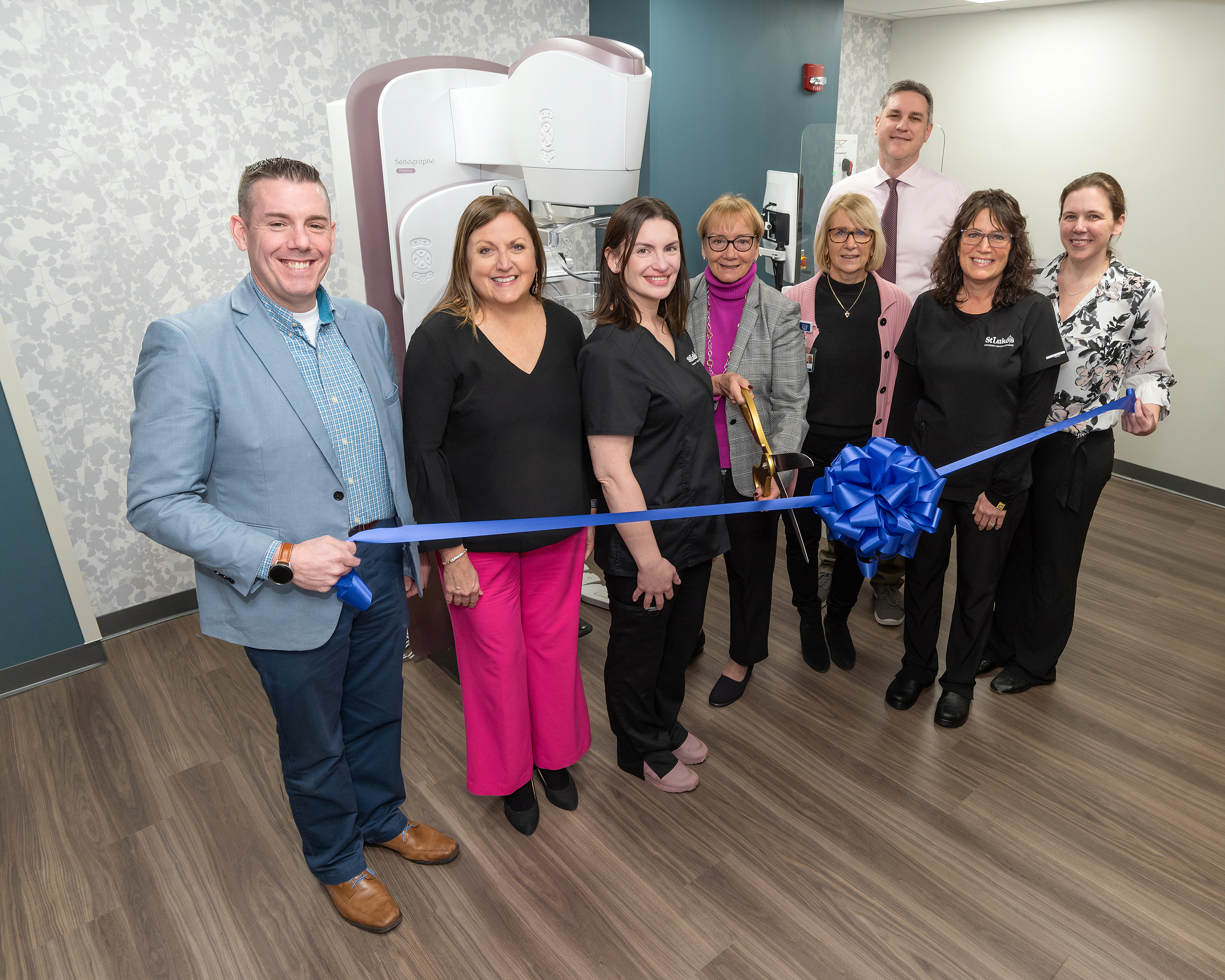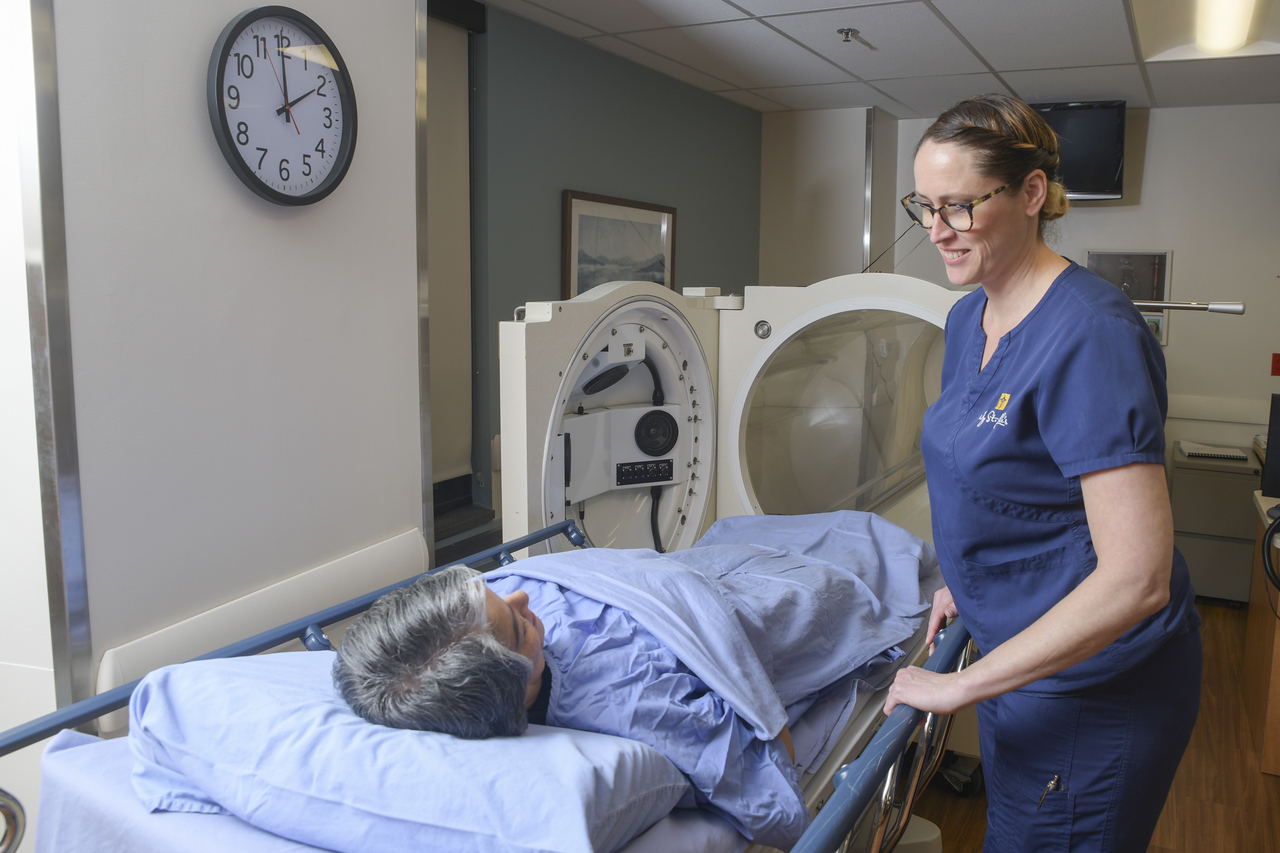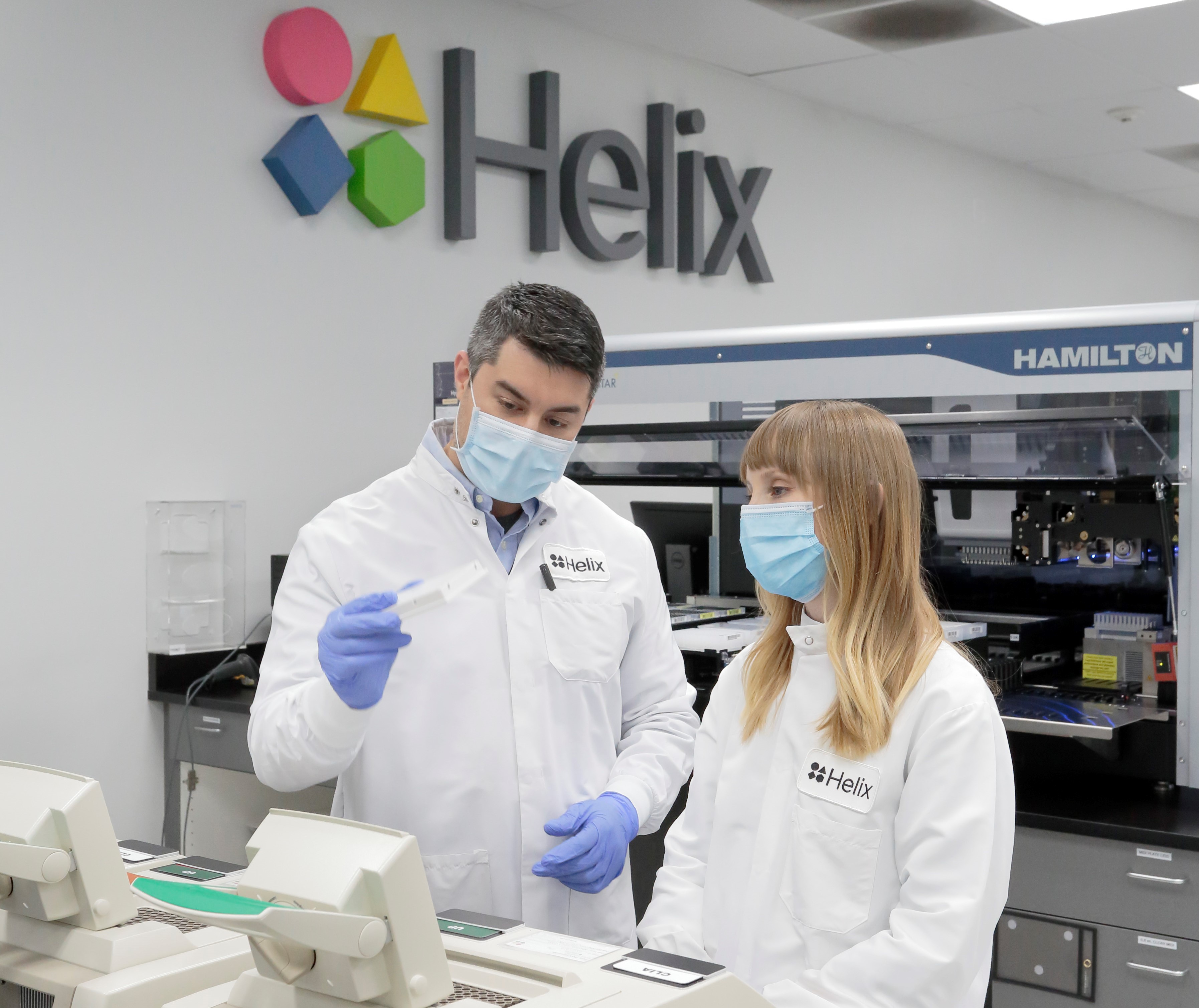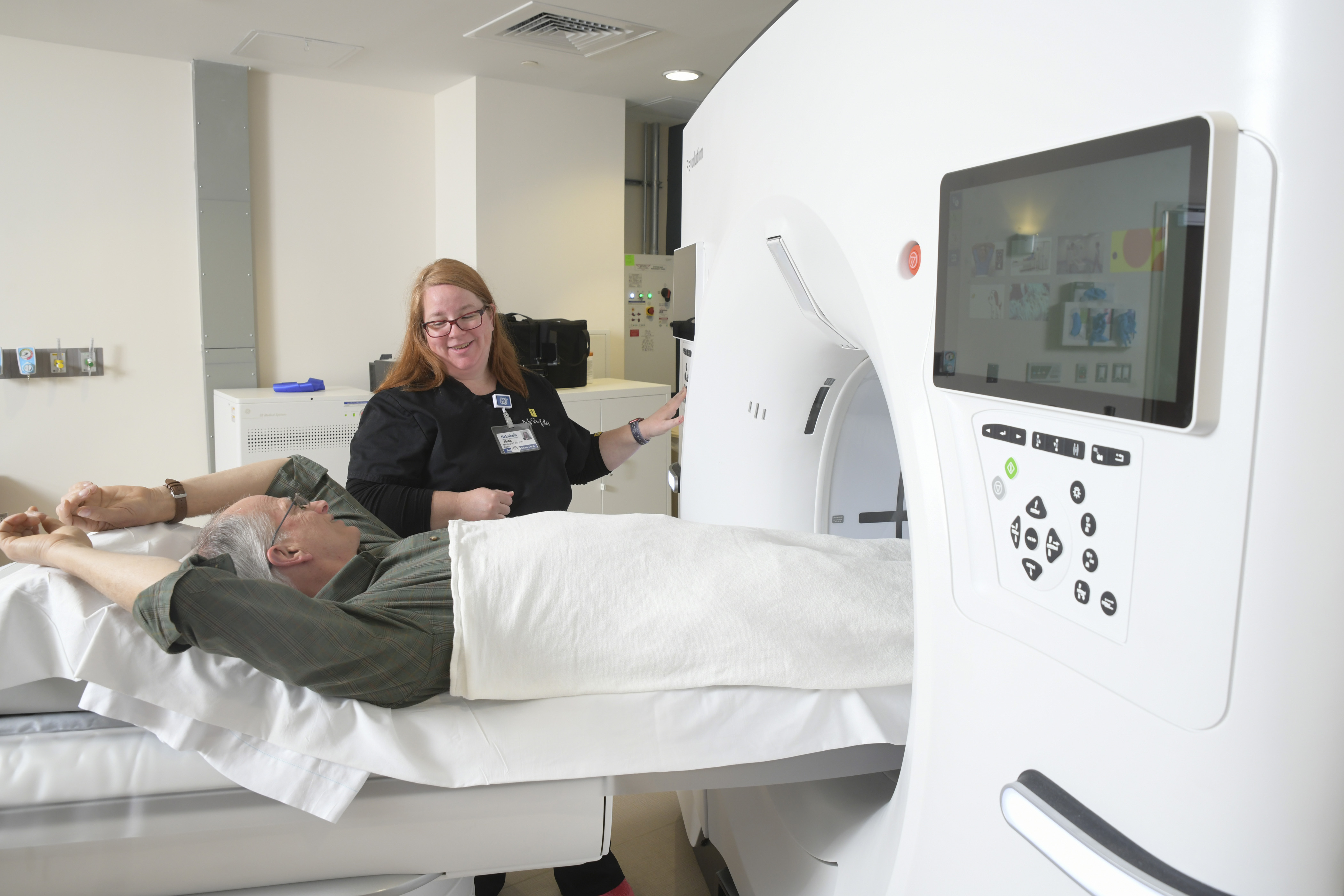Blog
At the time of Isabelle McMahon’s breast cancer diagnosis, she was finally at a place in her life where she felt content. She had just celebrated her 55th wedding anniversary, her children were grown, and she and her husband moved to the Poconos from Florida to be close to their older son, his wife and three beautiful granddaughters. She was also enjoying her rewarding volunteer job as a counselor at the Pregnancy Resource Center of the Poconos, where she helps young and/or unmarried women and their babies find resources, education or support during and after their pregnancy. “Our goal is to help these young women in every stage of early motherhood from pregnancy, labor and delivery to taking care of a newborn,” explains Isabelle. “We feel that the more educated and prepared for pregnancy and motherhood they are, the more successful they will be.”
Isabelle had always been mindful of fulfilling her obligation for her yearly mammogram. Every year, starting in her mid-forties, the test results were normal. But this year was different. For the first time, the doctor noticed that she had dense breast tissue, making the screening more difficult to read. Having dense breasts can increase the chances of breast cancer since precancerous tissue can be hard to detect, so doctors tend to be cautious when they get such a reading. “I wasn’t nervous at this point,” says Isabelle. “The technician didn’t seem overly alarmed and I was told that women with dense breast often require monitoring and a more detailed imaging of the area.”
But a second mammogram revealed that Isabelle did indeed have a tumor. After doctors biopsied the area, the doctor called her into her office to discuss the results and next steps. “I was devastated to hear that I had breast cancer,” recalls Isabelle. “But I also felt very much empowered to learn everything I could about treatment options and I felt comforted by the support of my friends and family.”

Isabelle and her husband, Ed.
She immediately consulted with her doctor of the past 15 years, Dr. Ralph Hawks, whose judgment she trusted. He strongly recommended that Isabelle see Dr. Lee Riley, of St. Luke’s Cancer Center at Anderson Campus. Within a week, Isabelle was sitting in Dr. Riley’s office, consulting with his nurse, Carol Kachmarsky. “Both Carol and Dr. Riley were friendly, reassuring and calming right from the start,” says Isabelle. “Dr. Riley spent a long time examining me and patiently educating my husband and me about what would happen next.” Isabelle went home overwhelmed and scared about the lumpectomy that would remove the tumor, but she felt hopeful and confident in Dr. Riley and his many years of performing cancer surgery.
While trying to learn everything she could about her type of cancer and carefully considering all the benefits and risks of her subsequent radiation options, she came across some information about IORT (Intraoperative Radiation Therapy) as a promising treatment for her type of cancer. She was surprised and relieved that St. Luke’s not only had the apparatus at their Anderson Campus, but that they were the first in the entire state to utilize the treatment. After discussing this with her doctor, they agreed that it was a possible based on her type and stage of cancer. “In order to benefit from IORT, we look for markers like age, the size of the tumor, type and stage of the cancer cells that make up the tumor and the size of the breast, but also we look at how fast the tumor is growing,” explains Dr. Riley. “A patient with a slow growing, early stage tumor is considered a potential candidate for IORT.”
After meeting with Dr. Riley, Isabelle consulted with Dr. Nimisha Deb, who detailed how the procedure would work. She explained that if there was a good fit of the IORT spherical applicator to the treatment area, this type of radiation could be successful. “She was so pleasant and knowledgeable,” remembers Isabelle. “I immediately felt comfortable with her.”
Three weeks later, Isabelle was on the operating table for surgery. After she regained consciousness, the first thing she asked the nurses was if the doctors were able to use IORT. She was so relieved to learn that they did. “Because of IORT,” suggests Isabelle, “my radiation took 30 minutes rather than five days a week for six weeks!”
By that afternoon, Isabelle was home with slight pain at the site of the surgery, but nothing major; a few ice packs helped to heal the discomfort. Two weeks later, she was back to feeling like herself again and Dr. Riley told her that the surgery was a success. The last piece of her treatment was a visit to Dr. Hikaru Nakajima, an oncologist at St. Luke’s, who prescribed Anastrozole®, a pill that helps fight breast cancer by killing the estrogen hormones and helps reduce the risk of recurrence in breast cancer patients.
“My total experience, from start to finish, was so much better than I feared it would be when I was diagnosed,” says Isabelle. “Dr. Riley and Dr. Deb gave me confidence and filled me with hope. The nurses were kind and friendly, even making me laugh, which calmed me down and helped me relax.”
Isabelle’s regular follow ups revealed that the cancer had not spread to other organs and tissues. She is very grateful to all the St. Luke’s Cancer Center staff who compassionately helped her through her ordeal. “I knew that there was a chance that I wouldn’t be able to receive IORT, but I am so thankful that I was,” says Isabelle. “And to think that this revolutionary treatment option was available to me by amazing doctors 40 minutes from my home - it’s truly a blessing.”
Now, Isabelle is back to her volunteer work at her church and spending time with her husband, children and grandchildren. She also shares her experience with all the women in her life, especially her friends in the local Red Hat Society. “The Red Hats allow us to let the child within come out,” jokes Isabelle. “They are a great bunch of gals and I want to make sure they all stay healthy.”
Isabelle is also back at her volunteer job at the Pregnancy Resource Center. “I find the work very gratifying,” notes Isabelle. “After I counsel a girl for nine months and then she returns with a beautiful, healthy baby, I know that I’m making a difference. And my doctors at St. Luke’s helped me get back to where I needed to be to make a difference in these young girls’ lives.”
Intraoperative Radiation Therapy
IORT (Intraoperative Radiation Therapy) is a high dose of radiation administered directly to the site of a removed tumor during a lumpectomy. “Not every patient is a good fit for IORT,” suggests Dr. Lee Riley, surgical oncologist and chairman of oncology services at St. Luke’s. “But we were optimistic that it would work for Mrs. McMahon and after we got the conclusive biopsy report, we knew it was a good option for her.”
IORT is specifically indicated for women in early stages of breast cancer who possess certain criteria or markers, like age and type and stage of cancer, to determine if the patient is a good candidate for the treatment.
IORT is used during a lumpectomy procedure. When a surgeon goes into the breast to remove the affected tissue, a sphere applicator is inserted into the cavity left by the removed tumor. The sphere comes in five different sizes, so the surgeon can customize the treatment based on the individual patient. Isabelle’s tumor was about half an inch in diameter, so Dr. Riley picked the appropriately sized applicator to administer IORT. The radiation is conducted through the sphere applicator, directly to the area of the tumor, leaving as much of the healthy tissue as possible. “The entire procedure from beginning to end lasts about a half hour,” explains Dr. Nimisha Deb, radiation oncologist and chief of radiation oncology at St. Luke’s. “After IORT is finished, the surgeon then closes as normal and the patient can usually go home that same day.”
With breast cancer cases, the site of the tumor is also the place at which recurrence can occur so follow up visits are necessary. But with IORT, doctors are seeing only about a five percent or less recurrence rate thus far. Not all insurance companies cover IORT, because they categorize it as experimental, but this is changing more and more; Medicare is now covering it.
Side effects of IORT are very minimal although some patients may experience a mild skin reaction. “Using IORT not only has high rates of success, but it takes less time for the patient, has minimal adverse side effects and is more cost effective all around,” concludes Dr. Deb. “We’re very fortunate to be able to offer this revolutionary treatment option to our patients at St. Luke’s.”
“St. Luke’s was already a leader in breast cancer care,” states Dr. Riley. “But being able to offer our patients this kind of innovative treatment in one day, rather than six weeks, makes us even better equipped to stop this kind of cancer so that patients can go back to living.” St. Luke’s was the first hospital in Pennsylvania to offer INTRABEAM® IORT and remains the only hospital in the area to offer it to its patients. The INTRABEAM® machine for IORT is located in the Anderson Campus operating room.
Feature photo: Now that breast cancer is behind her, Isabelle can get back to the things she loves, including volunteering and spending time with her friends in the local Red Hat Society.






